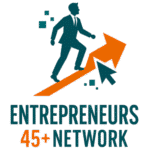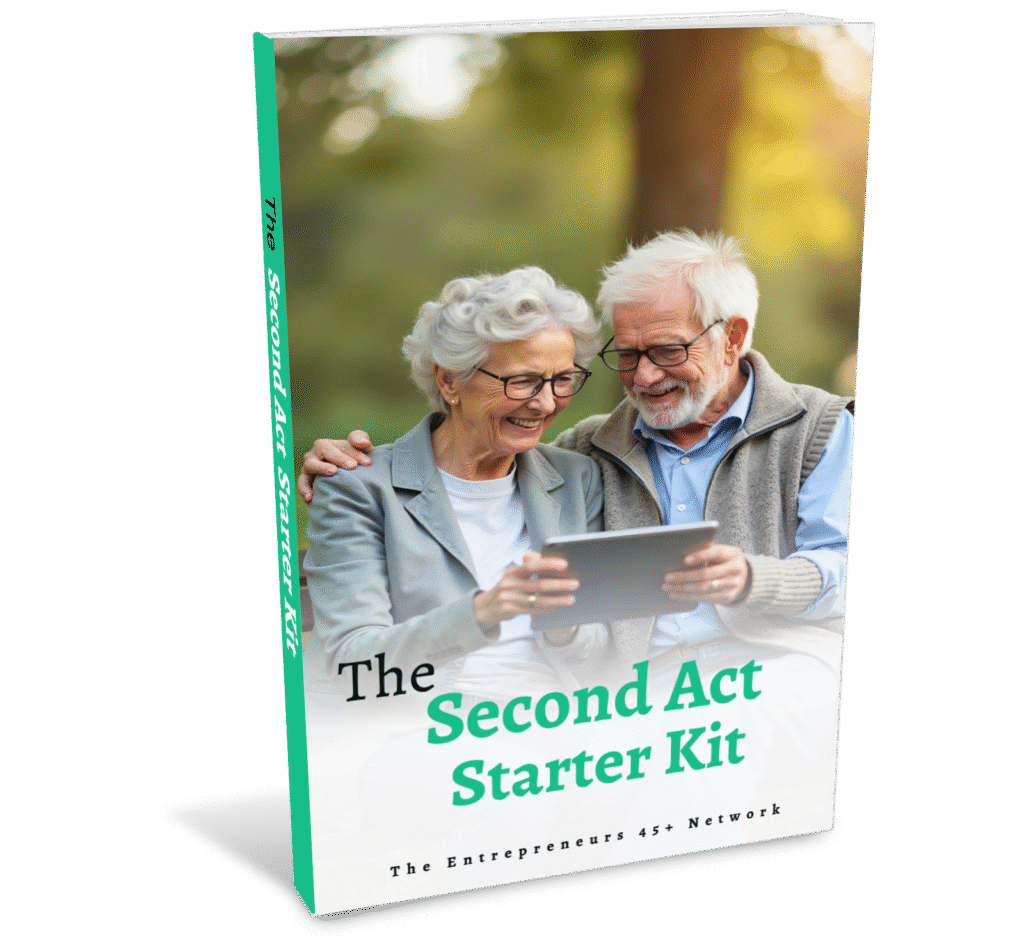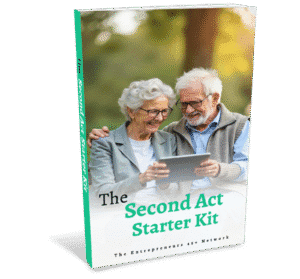Just because you feel stuck, you can learn structured techniques to generate and vet business ideas quickly; this post teaches practical exercises, testing frameworks, and sourcing methods so you can move from blank page to validated concept and refine your approach, including a curated resource like 7 Proven Ways to Come Up with New Business Ideas.
Understanding the Basics of Business Ideas
Defining What Constitutes a Brilliant Business Idea
You should judge an idea first by whether it solves a clear, measurable problem for a definable set of customers: if 42% of startups fail because there’s no market need (CB Insights), your early focus has to be on validating demand. Look for an idea where you can quantify the pain (time lost, dollars wasted, conversion drop-offs) and show how your solution reduces that metric by a meaningful percentage; investors and partners often look for an LTV/CAC ratio of roughly 3:1 or better and unit economics that scale.
Beyond demand, a standout idea combines repeatable revenue mechanics, scalability, and some form of defensibility—patents, proprietary data, network effects, or distribution advantages. Examples like Dropbox’s referral-driven growth (heavy viral coefficient early on) or Warby Parker’s vertically integrated supply chain show how operational choices and growth loops turn a simple solution into a durable business model.
Importance of Innovation in Business
Innovation isn’t just novelty; it’s the change that meaningfully alters unit economics, retention, or market reach. You can pursue incremental tweaks—cutting CAC by 20% through onboarding improvements—or aim for disruptive moves that redefine an industry, as Uber did by pairing GPS, mobile payments, and dynamic pricing to massively improve availability and convenience. Clayton Christensen’s framework helps: incremental innovation optimizes existing models, disruptive innovation creates new ones.
When you innovate, expect impacts across margins, defensibility, and customer lifetime value: automating a process can reduce cost-per-unit by double digits, data-driven personalization can lift retention rates, and platform plays create network effects that raise switching costs. OECD and industry analyses show firms that systematically invest in R&D and process innovation typically outperform peers on productivity and revenue growth, so plan innovation as a repeatable discipline, not a one-off stroke of genius.
Practically, map your customer journey to identify the highest-friction steps, measure baseline KPIs (conversion, churn, CAC, LTV), then run rapid experiments—prototype in 1–2 week sprints and prioritize tests that can deliver a 10–30% lift. You should track statistical significance for major changes, run at least three concurrent experiments on separate cohorts when possible, and focus first on fixes that improve unit economics; small, validated wins compound into the kind of systemic advantage that makes an idea truly brilliant.
Factors That Fuel Creativity
Constraints, routine tweaks, and deliberate inputs influence whether an idea surfaces or stalls. You can use constraints as a launchpad—Airbnb founders started by solving the simple constraint of conventionally empty apartments during conferences, and companies like 3M institutionalized “15% time” (and Google popularized “20% time”) to let engineers pursue side projects that produced hits like the Post-it and Gmail. Sleep and incubation matter too: studies linking REM sleep to improved associative thinking show that stepping away from a problem for a night often yields more original solutions than grinding nonstop.
- Time for incubation and uninterrupted deep work blocks (e.g., 90 minutes)
- Diverse knowledge inputs—cross-industry reading or attending one non-related conference per quarter
- Physical variables—light, plants, and moderate ambient noise (around 70 dB) can boost divergent thinking
- Deliberate constraints that force novel combinations
- Intrinsic motivation and the ability to prototype quickly
After you map which of these elements you can change in the next 30 days, pick one variable to test and measure the outcome against a simple metric like number of viable ideas or prototype iterations.
Environment and Mindset: Setting the Stage for Ideas
Design your workspace to nudge the brain toward associative thinking: natural light and a plant or two reduce stress and sustain attention, while a moderate ambient sound level—researchers found roughly 70 dB optimal—encourages abstract processing that feeds creativity. You should also rotate stimuli: keep a whiteboard for sketches, a shelf of unrelated books (architecture next to poetry), and a low-friction prototyping area so an impulse can immediately become a sketch or mockup.
Adopt a growth-oriented pattern of reflection and iteration that treats small failures as data you can mine. Schedule recurring “idea hours” and a weekly 60–90 minute uninterrupted block for divergent work; combine that with short experiments where you prototype within 48 hours so feedback replaces guesswork. When you structure time and space this way, creativity becomes a predictable output rather than a heroic event.
The Role of Collaboration and Networking
Cross-pollination accelerates idea quality: weak ties—people outside your immediate circle—often bring the novel information that rewires a concept, a point emphasized by sociologist Mark Granovetter’s work on networks. You can deliberately expand weak ties by attending two industry mixers or one cross-disciplinary workshop per month, then follow up with a one-question ask: “What problem are you solving that keeps you up at night?” That single question frequently surfaces unmet needs you can address.
Structured collaboration techniques lift raw ideas into viable concepts faster than ad hoc meetings. Use time-boxed brainstorming with silent idea generation followed by clustering, or run rapid prototyping sprints modeled on IDEO’s multidisciplinary teams—mix a designer, an engineer, and a customer-facing person for a 48-hour sprint to surface 10+ testable concepts. Track outcomes: teams that prototype within 48 hours are materially more likely to iterate to product-market fit.
Practical networking moves work: prepare a 30-second context statement about what you build, carry two concrete asks (feedback on a mockup, an intro to a potential customer), and log contacts in a simple CRM so you follow up within 72 hours; those follow-ups convert casual conversations into collaborative experiments.
Practical How-To Techniques
Focus on repeatable rituals that force idea generation rather than waiting for inspiration. Use a mix of timeboxed exercises (15–30 minute sprints), structured prompts (SCAMPER: Substitute, Combine, Adapt, Modify, Put to another use, Eliminate, Reverse), and quantitative checks (run a 100‑review scrape or 200‑respondent survey) so you’re generating ideas and testing signal simultaneously. Alternate solo deep work with short, facilitated group sessions—you can get 90 raw concepts from a single 6‑3‑5 brainwriting round (6 people × 3 ideas × 5 rounds) and pare down to 3 testable hypotheses in an hour.
Track outputs with simple metrics: raw idea count, novelty score (0–3), and validation cost to prototype. Use templates like Value Proposition Canvas and a 1‑page experiment plan (hypothesis, success metric, cost, timeline) to move quickly from ideation to learning. Keep a running backlog labeled by effort (0–2 weeks, 2–8 weeks, >8 weeks) so the best ideas don’t fade into a forgotten notebook.
Brainstorming Methods to Unlock Ideas
Start with silent, parallel ideation to avoid groupthink: give each participant 10 minutes to produce 20 ideas on sticky notes, then cluster themes and vote. Try Crazy 8s from Design Sprint—fold a sheet into eight panels and sketch eight variations in eight minutes—to force divergent thinking; teams often surface three distinct directions in one 20‑minute cycle. For distributed teams, run asynchronous brainwriting in a shared Google Doc or Miro board so each person adds three ideas and builds on another person’s note over 48 hours.
Use provocation techniques to reframe constraints: flip assumptions (“what if customers paid per usage instead of a subscription?”), apply SCAMPER prompts to an existing product, or do role‑storming where you ideate as a 60‑year‑old frequent traveler or a 22‑year‑old student. End sessions with a lightweight voting system—each person gets three dots—and convert top votes into one‑page experiments with a single measurable metric (activation, conversion, retention) to validate within two weeks.
Utilizing Market Research for Inspiration
Mine reviews, forums, and search trends for pain points and unmet needs: scrape the top 100 Amazon or Yelp reviews for your category and tag recurring complaints—if “slow delivery” appears in 30–40% of comments, that’s a concrete problem to solve. Use Google Trends to spot rising search queries (set the timeframe to 12–24 months) and Ahrefs or SEMrush to quantify keyword volume; a rising query with monthly searches >1,000 and low competition often signals a niche to test.
Combine quantitative signals with quick qualitative checks: run a 5–7 question survey to ~200 respondents to get ~±7% margin of error, or host three 45‑minute customer interviews to explore motivations behind top complaints. Use SimilarWeb to benchmark competitor traffic sources and Statista or government datasets to validate market size—if a niche shows >$100M annual spend and fragmented providers, you likely have room for a focused, better solution.
Practical sequence you can execute in a week: Day 1—pull top 100 reviews and tag themes; Day 2—run keyword and trend checks for 10 candidate niches; Day 3—build a 5‑question survey and run 200 responses via a $200–$600 ad spend; Day 4—conduct three 45‑minute interviews; Day 5—synthesize into one prioritized problem statement and design a $500 prototype test. This process turns abstract market signals into concrete, testable ideas you can validate quickly.
Tips for Enhancing Idea Generation
Push past brainstorming rituals by adding tactical constraints: pick a customer persona, impose a 48-hour prototype deadline, or limit features to three core benefits. Use SCAMPER (Substitute, Combine, Adapt, Modify, Put to another use, Eliminate, Reverse) and run a 30-ideas-in-30-minutes sprint weekly to force quantity before quality. If you need a structured starting point, follow frameworks like the one outlined in How To Come Up With a Unique Business Idea to move from observation to testable concepts.
- Run a 5-minute problem interview with 20 prospects to surface real pain points.
- Create three constraint cards (budget, time, audience) and combine two at random for each idea session.
- Prototype the cheapest version in 48 hours and measure one clear metric (e.g., sign-ups, clicks, purchases).
Turn experiments into a repeatable engine by tracking outcomes: log each idea, the constraint used, the prototype cost, and the single metric you measured. This
Daily Habits to Boost Creativity
Start your day with a 10-minute idea sprint: set a timer and list as many solutions to a single problem as you can — aim for 15–20 ideas to break past the obvious. Take a 20–30 minute walk after that sprint; walking has been shown to improve divergent thinking and often turns vague notions into specific experiments. Pair the walk with a voice memo so you capture the flashes that happen on the move.
Stack small habits: a 5-minute evening reflection where you note one customer quote, one awkward moment, and one bright idea will build a rolling backlog of testable concepts. Try a “50-in-30” challenge (50 raw idea notes in 30 days) to force volume; after the month, filter the list by feasibility, customer value, and potential revenue to pick three to prototype.
Leveraging Feedback and Mentorship
Design feedback loops that give you directional clarity: conduct 20 qualitative interviews, then a 100-response survey to validate magnitude. Ask targeted questions — “What job were you trying to get done?”, “How much would you pay today?”, “What stopped you from using a solution?” — and record verbatim answers to detect themes. Use NPS as a simple quantitative follow-up and track changes after each iteration.
Find mentors who have solved the same category problems: one operational mentor (process, hiring) and one market mentor (customer, pricing) is often enough to accelerate decisions. Join a mastermind of 4–6 peers that meets monthly and holds you to one experiment per month; early-stage founders who joined accelerators like Y Combinator leveraged mentor feedback to pivot from low-traction ideas to scalable models, as Airbnb did during its YC batch.
Structure the mentorship relationship: give mentors a one-page update with metrics, hypothesis, and the specific ask (feedback on pricing, intros to channels, critique of landing page). Ask for introductions and two concrete next steps after each meeting, then execute and report back within two weeks to keep the loop tight and actionable.
Transitioning Ideas into Action
Evaluating Viability and Feasibility
Start by sizing the market with a TAM/SAM/SOM breakdown: estimate the total addressable market, then narrow to the serviceable and obtainable segments. If your SAM is under $50–100 million, plan for a high-margin or high-frequency model to justify investment. Validate demand with 12–20 targeted customer interviews and a simple demand test such as a landing page or paid-ad funnel; Dropbox’s early demo video and landing page generated tens of thousands of signups, proving demand before a full build.
Measure unit economics early: calculate CAC, LTV, contribution margin and target an LTV:CAC ratio of at least 3:1 for scalable consumer businesses, or shorter payback periods (6–12 months) for B2B SaaS. Factor in regulatory, supply-chain, and technical constraints—run a quick compliance checklist and a prototype feasibility review to identify any non-negotiable blockers that would force pivoting before you commit significant capital.
Steps to Develop and Execute Your Idea
Identify the riskiest assumptions and convert them into experiments: list 3–5 hypotheses (e.g., customers will pay $X per month, onboarding takes <10 minutes, churn <5%/month) and design one metric-driven test per hypothesis. Build an MVP in 2–12 weeks using the fastest route to learning—concierge or landing-page presales, no-code prototypes, or a single-feature alpha—and run a 30–90 day sprint focused on conversion, activation and retention metrics.
Structure execution around measurable milestones and resource constraints: set 90-day OKRs, allocate runway in month blocks, and assign owners for product, growth and ops. Use rapid iteration cycles (biweekly sprints), A/B testing for pricing/positioning, and a dashboard tracking 3 core KPIs (acquisition cost, activation rate, monthly retention) so you can decide to scale, pivot, or kill the idea within a defined timeframe.
Consider financing and tooling pragmatically: seed rounds typically range from $500k–$2M and should buy 12–18 months of runway; if you’re bootstrapping, aim for MVP and early revenue within 3–6 months. Leverage freelancers, low-code platforms (Bubble, Webflow), and payment stacks (Stripe) to cut time-to-market—Buffer validated willingness-to-pay with a simple landing page and iterated pricing before building a full product.

Common Pitfalls to Avoid
You can spend months polishing features no one asked for and watch competitors capture the market: CB Insights found that 42% of startups fail because there’s no market need. Prioritizing perfection over validation drains cash and morale — build the smallest test that proves demand instead of waiting for a “perfect” launch. Blockbuster shelled out time and capital while Netflix tested subscription streaming and pivoted quickly; that difference in speed and focus determined the outcome.
Analysis paralysis also quietly eats momentum. Waiting for flawless data often means you miss windows where 2–6 week experiments would have revealed clear signals. Set fixed windows for tests (two-week sprints, 30–90 day pilots) and predefine success metrics so you avoid indefinite deliberation that costs you 6–12 months of growth.
Overcoming Fear of Failure
Fear shrinks what you try; treat new ideas as falsifiable hypotheses. Dropbox famously validated demand with a short explainer video that generated thousands of sign-ups before the full product existed, turning the fear of building the wrong thing into a low-cost market test. You should aim to validate interest with simple metrics — for example, a landing page that gets a 1–5% sign-up conversion from targeted traffic gives you actionable evidence before heavy development.
Design small, time-boxed experiments and a clear risk budget: allocate a fixed amount (for many early projects $2,000–$10,000 is realistic) and a short timeline to get a yes/no signal. Run pre-mortems to surface failure modes, conduct weekly micro post-mortems to capture three lessons, and tie identity to learning rather than outcomes so you can fail fast and iterate based on data instead of anxiety.
Recognizing and Addressing Stagnation
Stagnation shows up in numbers: flat monthly active users for 3+ months, month-over-month revenue growth below 1–5%, or churn rising above 5% monthly. Those are actionable red flags that tell you to stop optimizing and start exploring. Nokia and Kodak both lingered in optimization cycles while markets shifted; you should use cohort analysis to spot where retention or engagement drops and target that exact moment instead of tuning surface metrics.
Kick off a 90-day revitalization cycle when you hit stagnation thresholds: run six disciplined experiments per quarter (pricing tweaks, onboarding redesigns, three-channel acquisition tests), interview 20 target customers using job-to-be-done framing, and reallocate 10–20% of team capacity to new initiatives. Companies that institutionalize that cadence — Google’s historical 20% experiments, 3M’s innovation time — consistently surface high-leverage pivots and features instead of trailing the market.
Start your audit with the last 12 months: pull MAU, activation rate, ARPU, CAC, LTV and run cohort retention curves to locate the steepest falloff week. Then run these concrete actions: 20 customer interviews focused on unmet needs, two onboarding A/B tests over 6–8 weeks (targeting a 15% activation lift), and a conversion funnel experiment on a 1% sample of traffic. If an experiment shows early signal improvement (activation +10–15% or CAC down 10%), scale; if not, kill quickly and iterate.
Summing up
As a reminder, you generate brilliant business ideas by deliberately hunting problems, reframing them, and combining your skills, interests, and market gaps. Use constraints and simple frameworks to force creativity, schedule regular ideation time, and talk to real customers early so you base ideas on observable needs rather than assumptions.
You then turn ideas into opportunities by testing quickly with low-cost experiments, gathering feedback, and iterating until the concept fits a viable market. With a disciplined process for observation, synthesis, and rapid validation, you can consistently move from feeling stuck to producing ideas that scale.



